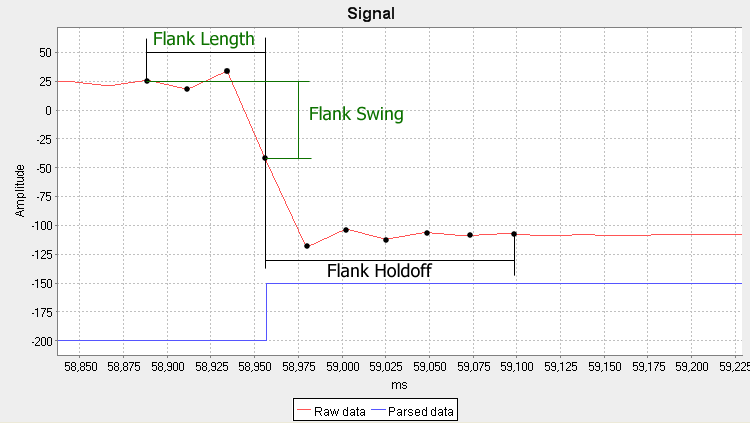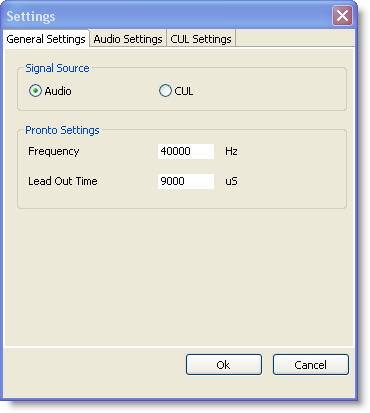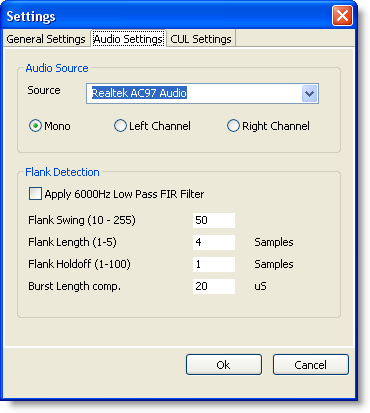analyzer:manual:settings
This is an old revision of the document!
Settings
The settings dialog can be reached from the tool bar or via the menu view→Settings…. The settings are groupt in three tabs: General Settings, Audio Settings and CUL Settings.
General Settings
| Field | Explanation |
|---|---|
| Signal Source | Select which source of data signal to use |
| Audio | Use audio input as signal source |
| CUL | Use a CUL-device as signal source |
| Pronto Settings | Pronto is a format for describing raw pulse signals. These settings affect how this format is generated |
| Frequency | Pronto encoding contains the IR modulation frequency. We have no decoders that actually detect this frequency, so here we specify which to use. Default is 40000 Hz |
| Lead Out Time | The Pronto decoder needs to know how long silence should be counted as the end of a signal. If the protocol has very long pulse spaces within a message this may have to be extended from the default 9000 micro seconds. |
Audio Settings
| Field | Explanation |
|---|---|
| Audio Source | In this group you specify which audio source to take the input signal from |
| Source | Here you select which sound card and input device to use |
| Mono | Only one channel used. This is usually the best setting when using the microphone input, since most sound cards only have one microphone channel |
| Left Channel | Use the Left audio channel |
| Right Channel | Use the Right audio channel |
| Flank Detection | The internal flank detector tries to recreate the digital pulses in the analog signal by finding the rising and falling edges (flanks). These are the configuration settings for this module |
| Apply … Filter | If the input signal contains a lot of noise, a digital low pass filter can be applied to the signal before flank detection. This Smooths out the signal. You may have to increase Flank Length when this is used |
| Flank Swing | The hight of a change needed to count as a flank. Use about half the actual height observed in the raw view |
| Flank Length | How many samples needed to perform the flank |
| Flank Holdoff | How many samples after a detected flank we should wait until trying to find a new one. Can usually be set to 1 |
| Burst Length comp. | Many receivers of RF and IR signals are a bit “slow” in detecting the start of a mark pulse (burst). The result is that mark pulses are detected as a bit shorter then they are and space pulses a bit longer. This setting can compensate for this behavior |
The Flank Detection Algorithm can be described by this picture:

analyzer/manual/settings.1272476844.txt.gz · Last modified: 2018/11/03 02:57 (external edit)


